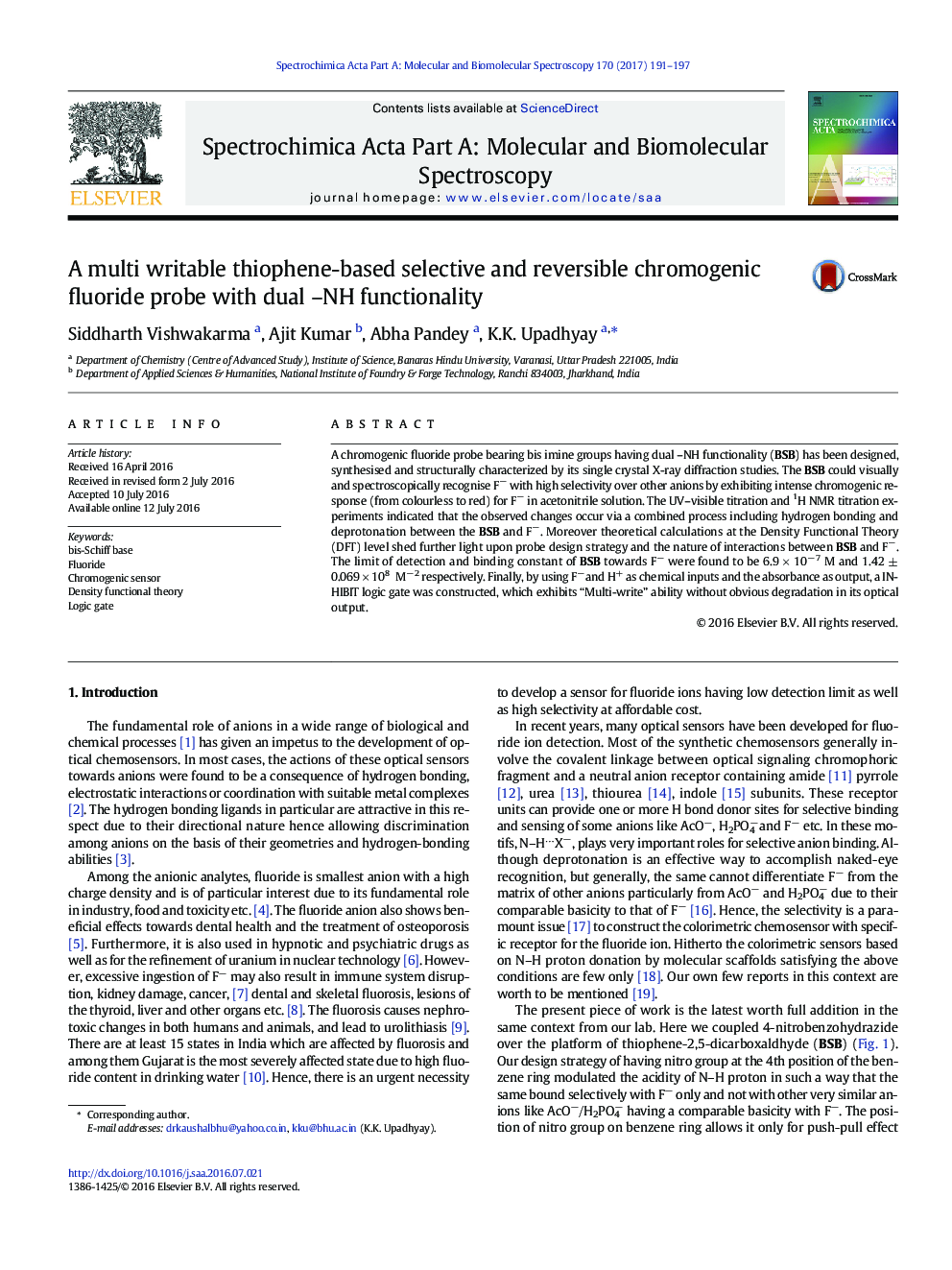| Article ID | Journal | Published Year | Pages | File Type |
|---|---|---|---|---|
| 1230789 | Spectrochimica Acta Part A: Molecular and Biomolecular Spectroscopy | 2017 | 7 Pages |
•A new bis Schiff base (BSB) is developed for highly selective and rapid chromogenic sensing of F−.•The BSB is utilized further as a molecular switch for F− and H+ with “Multi-write” ability.•X-ray crystal structure of BSB was also studied.•The DFT studies reveal that, the strategy of anchoring thiophene over BSB was quite important.
A chromogenic fluoride probe bearing bis imine groups having dual –NH functionality (BSB) has been designed, synthesised and structurally characterized by its single crystal X-ray diffraction studies. The BSB could visually and spectroscopically recognise F− with high selectivity over other anions by exhibiting intense chromogenic response (from colourless to red) for F− in acetonitrile solution. The UV–visible titration and 1H NMR titration experiments indicated that the observed changes occur via a combined process including hydrogen bonding and deprotonation between the BSB and F−. Moreover theoretical calculations at the Density Functional Theory (DFT) level shed further light upon probe design strategy and the nature of interactions between BSB and F−. The limit of detection and binding constant of BSB towards F− were found to be 6.9 × 10− 7 M and 1.42 ± 0.069 × 108 M− 2 respectively. Finally, by using F− and H+ as chemical inputs and the absorbance as output, a INHIBIT logic gate was constructed, which exhibits “Multi-write” ability without obvious degradation in its optical output.
Graphical AbstractA chromogenic fluoride probe having dual –NH functionality (BSB) detected F− visually and spectroscopically with high selectivity over other anions. The same is utilized further as a molecular switch for F− and H+ with “Multi-write” ability.Figure optionsDownload full-size imageDownload as PowerPoint slide
